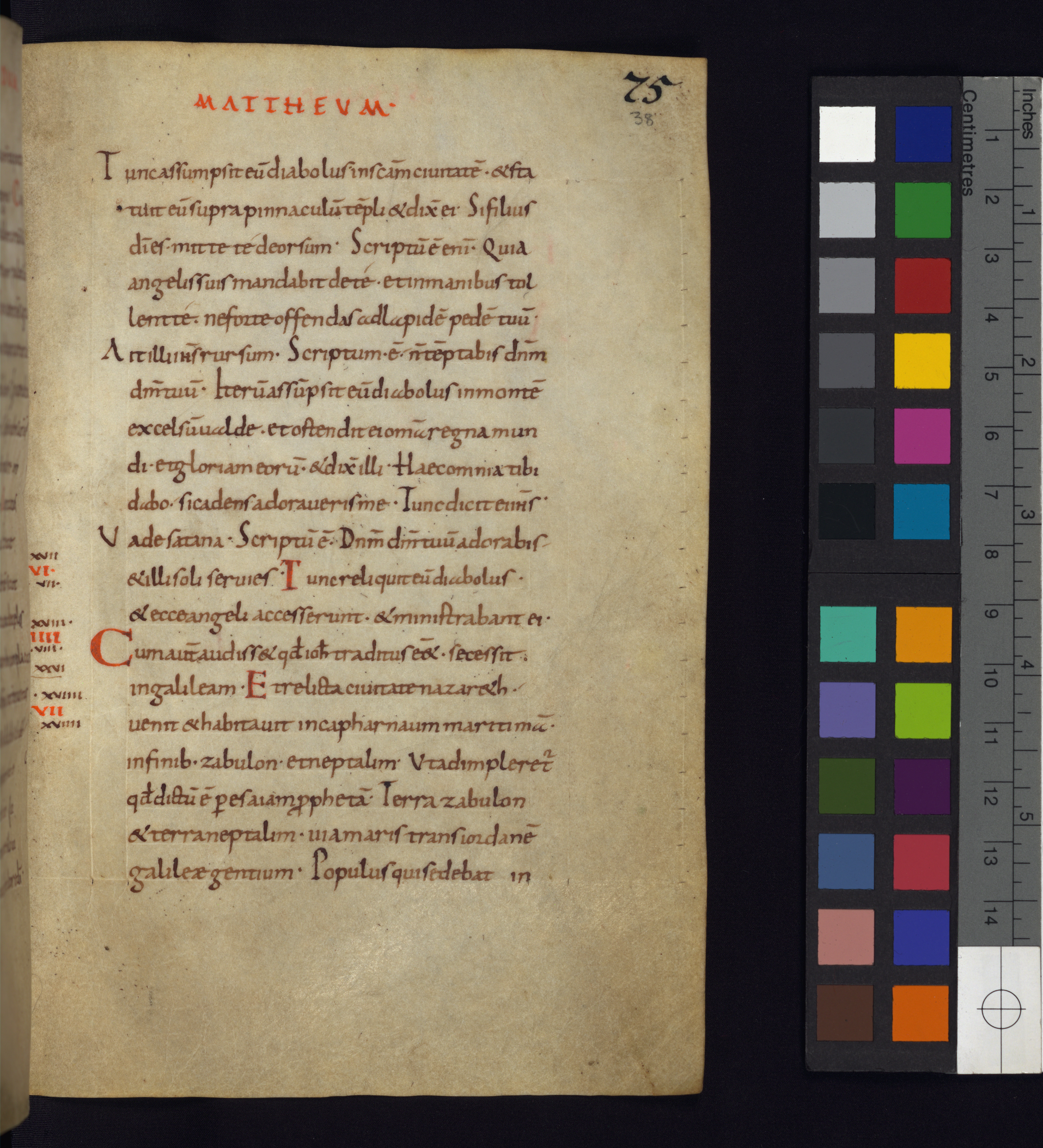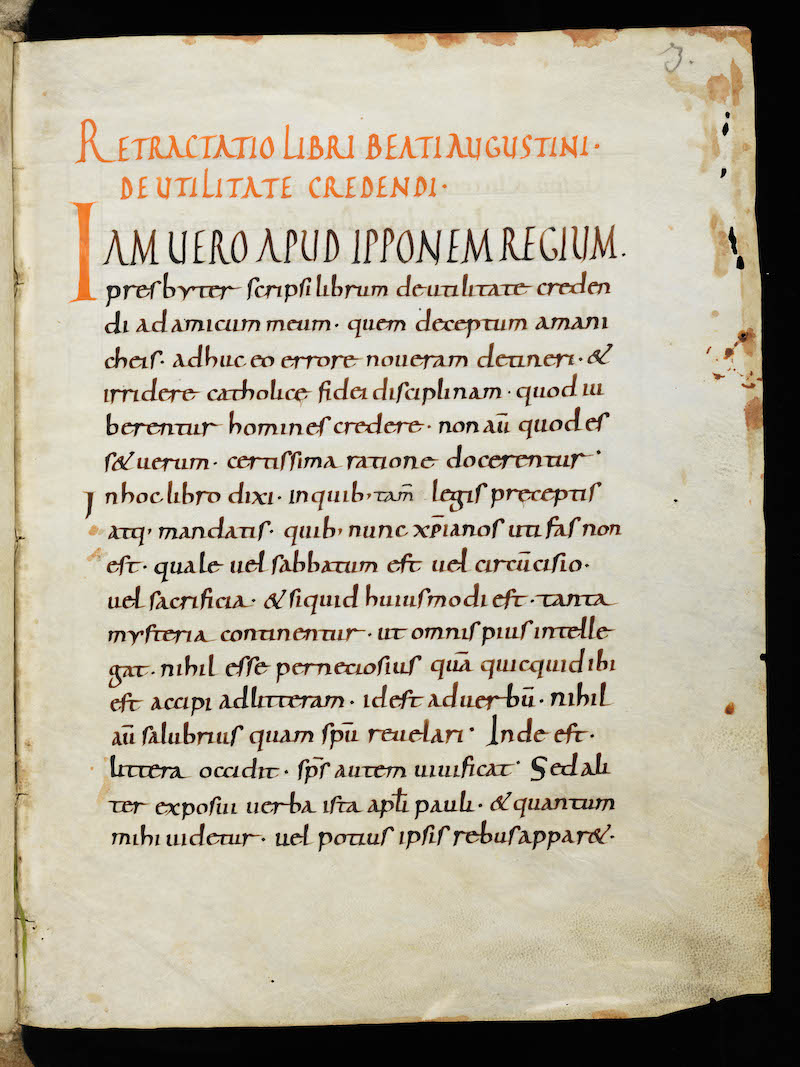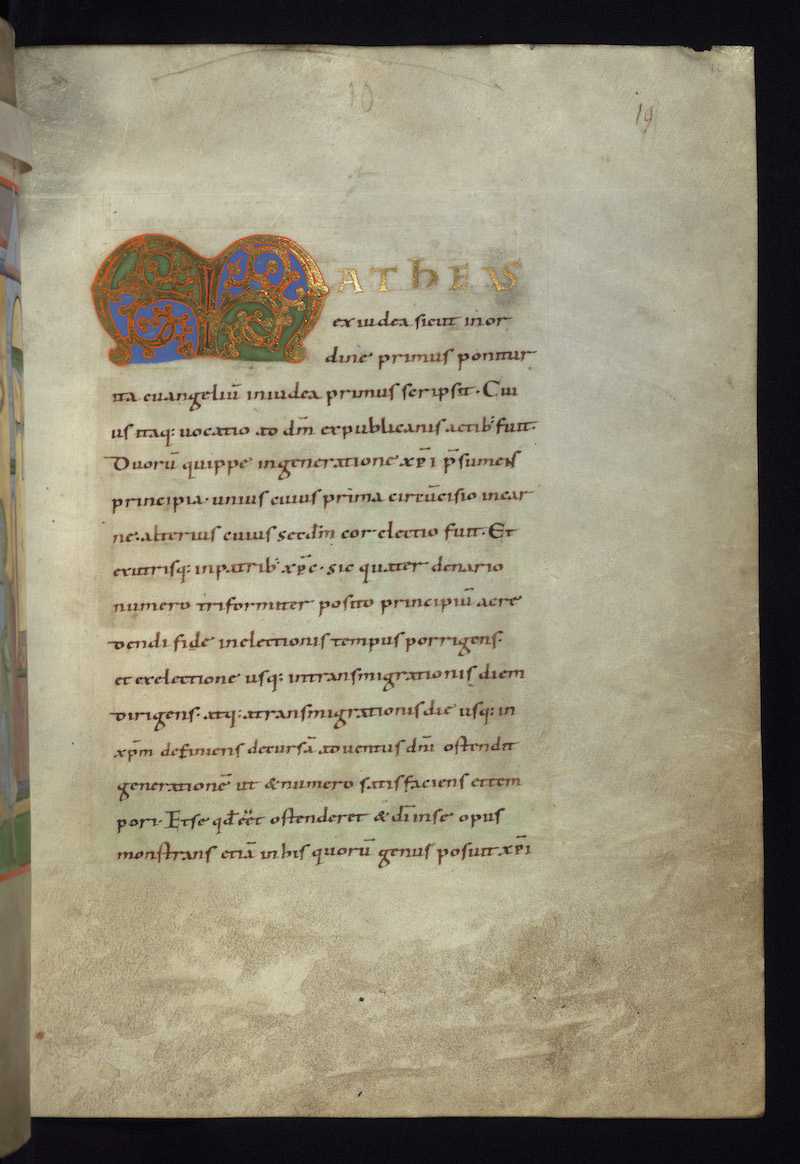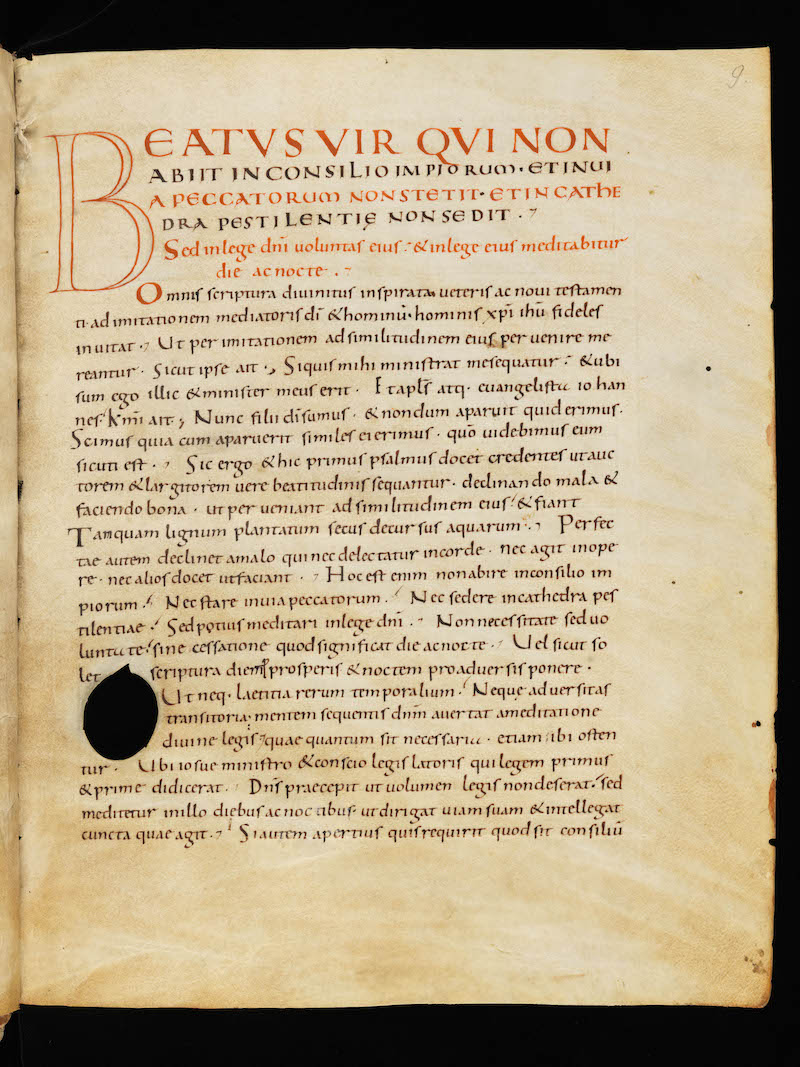
Caroline Minuscule, 9th century
-
Title
Gospels -
Text
Matthew 4.5-16 -
Language(s)
Latin -
Writing System
Roman -
Script(s)
Caroline Minuscule -
Country
United States of America -
City
Baltimore -
Repository
Walters Art Museum -
Shelf Mark
W.4, fol. 38r -
Common Name
Freising Gospels -
Century
9th century -
Year Range
865-875 -
Place Of Origin
Germany, Diocese of Freising -
Provenance
Still in Germany in the 19th century; in the hands of book dealers Léon Gruel and Robert Engelmann in Paris around the turn of the 20th century; acquired by Henry Walters in 1917; donated to the Walters Museum in 1931. -
Bibliography
Florentine Mutherich, "The Gospel Book W.4 of the Walters Art Gallery and Its Place in the Freising Scriptorium," in Gatherings in Honor of Dorothy E. Miner, edited by Ursula E. McCracken, Lilian M. C. Randall, and Richard H. Randall Jr (1973), 115-128.
T. Klauser, Das romische Capitulare evangeliorum: Texte u. Untersuchen zu s. altesten Geschichte. Vol. I (1972).
-
External Facsimile
This 9th-century copy of the Gospels is a tiny book – only about 5 x 7 inches, with a written area on each page of less than 3 x 5 inches. Despite its small size, it has elaborately-decorated canon tables and full-page evangelist portraits of the kind seen in more imposing Carolingian Gospel books. (See the link to the full manuscript at the Walters Museum to see the illustrations.)
The script and layout of the text are a mixture of high-grade, mid-Carolingian features and more archaic, lower-grade characteristics.
The dry-point ruling defines a space with room for initials outside the body of the written area – a key feature of Carolingian page layout – with Eusebian section references in the far left margin. Running titles and litterae notabiliores in black and red articulate the text and make it easy to find one's place.
The script itself is a somewhat rightward-leaning, laterally-compressed Caroline Minuscule. The scribe uses a mix of the Caroline a and the earlier, so-called cc a, and occasionally uses a c-t ligature typical of Pre-Caroline scripts.
Word-separation is rudimentary by the standards of the biblical manuscripts produced at centers of the Carolingian reform. The poor word-separation may owe something to the need to fit the text into such a small space, but it is still surprising for a manuscript of this date produced in major center in the Germanic-speaking area of the Carolingian empire. Though the inventory of abbreviations is small, as would be expected at this date, the number of abbreviations is fairly high for a luxury manuscript of the Gospels. Raised points set off major pauses and medial points set off minor pauses.
Acknowledgements: Described by Carin Ruff
Transcription
Running title: MATTHEVM˙
1 Tunc assumpsit eu(m) diabolus∙ in s(an)c(t)am ciuitate(m)∙ et sta(-)
2 tuit eu(m) supra pinnaculu(m) te(m)pli et dix(it) ei˙ Si filius
3 d(e)i es∙ mitte te deorsum˙ Scriptu(m) e(st) eni(m)∙ Quia
4 angelis suis mandabit de te∙ et in manibus tol(-)
5 lent te∙ ne forte offendas ad lapide(m) pede(m) tuu(m)∙
6 Ait illi ie(su)s rursum∙ Scriptum e(st)∙´ n(on) te(m)ptabis d(omi)n(u)m
7 d(eu)m tuu(m)˙ Iteru(m) assu(m)psit eu(m) diabolus in monte(m)
8 excelsu(m) ualde∙ et ostendit ei om(ni)a regna mun(-)
9 di∙ et gloriam eoru(m)∙ et dix(it) illi˙ Haec omnia tibi
10 dabo∙´ si cadens adoraueris me˙ Tunc dicit ei ie(su)s˙
11 Vade satana˙ Scriptu(m) e(st)∙ D(omi)n(u)m d(eu)m tuu(m) adorabis
12 et illi soli seruies˙ Tunc reliquit eu(m) diabolus˙
13 et ecce angeli accesserunt∙ et ministrabant ei˙
14 Cum aut(em) autisset q(uo)d ioh(annes) traditus e(ss)et∙ secessit∙
15 in galileam˙ Et relicta ciuitate nazareth∙´
16 uenit et habitauit in capharnaum maritima(m)∙
17 in finib(us) zabulon˙ et neptalim˙ Vt adimpleret(ur)
18 q(uo)d dictu(m) e(st) p(er) esaiam p(ro)pheta(m)˙ Terra zabulon
19 et terra neptalim∙ uia maris trans iordane(m)
20 galileæ gentium˙ Populus qui sedebat in
Paleographic Features
1. The acute accent over te, as in lines 3, 4, and 5, marks the word as a monosyllable (i.e., it indicates that it is not attached to another word). Note that the curve, angle, and thinness of the accent mark distinguish it from the common mark of abbreviation used throughout this manuscript.
2. The "cc" form of a is seen in ad lapide(m) in line 5.
3. ualde in line 8 allows you to compare the form of u with the "cc" form of a.
4. relicta in line 15 contains a c-t ligature of a type that derives ultimately from Later Roman Cursive and is common in Pre-Caroline scripts.
5. The 2-shaped abbreviation over t a the end of line 17 stands for ur.
6. Eusebian section numbers appear in the left margin on the lower half of the page. These refer to the tables at the beginning of the manuscript that show which where the same material appears in more than one gospel. The red numbers refer to the tables, and the black numbers refer to the sections listed within those tables.
7. The dry-point ruling for the marginal space is most clearly visible at the bottom left corner of the page.



